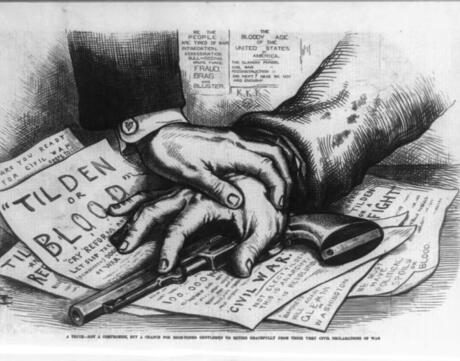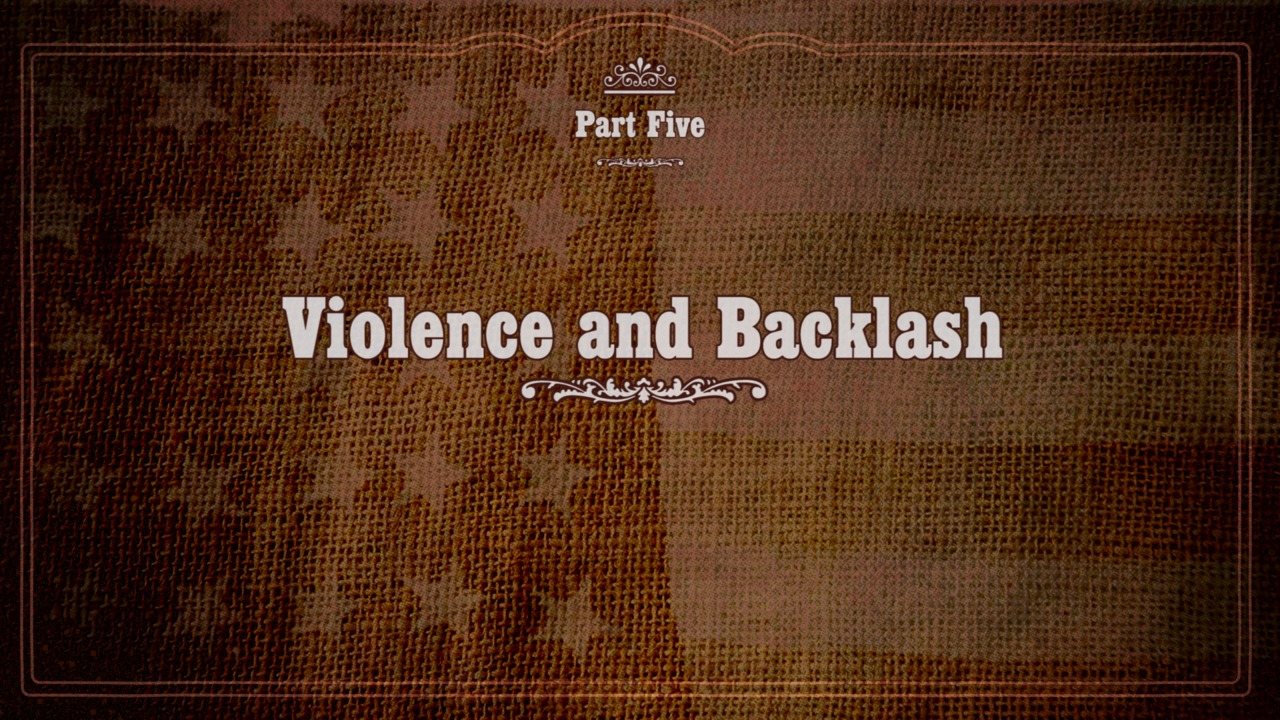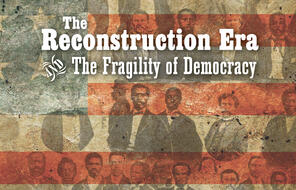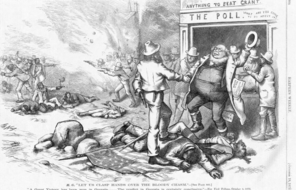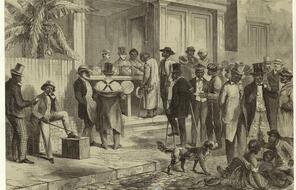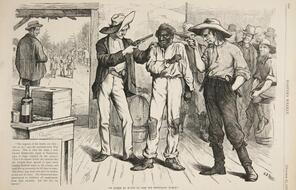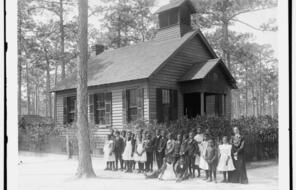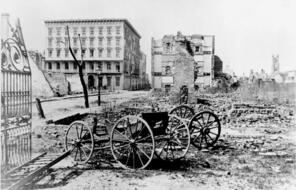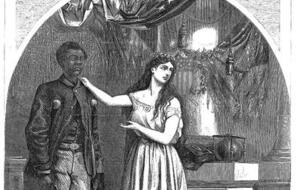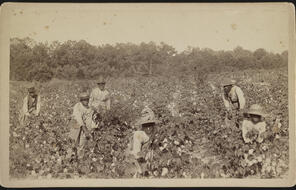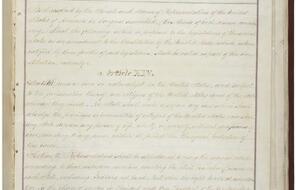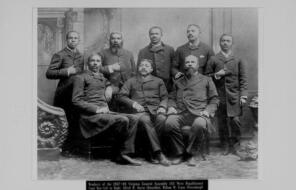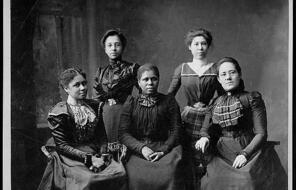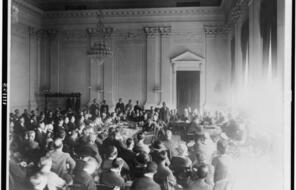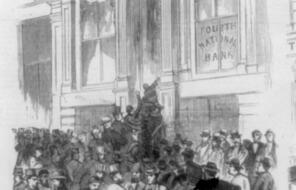From 1873 to 1876, a campaign of violence and intimidation, organized by the Democratic Party, swept across several Southern states with the goal of toppling Republican-controlled state governments and removing federal officeholders from power. Democrats at the time claimed that they were “redeeming” the South, a word that imbued their actions with a sense of religious significance. They argued that they were saving the South from evil—the “evil” of being controlled by Republicans, Northerners, and Black Americans. Historians continue to refer to this campaign to return the South to Democratic Party control as “Redemption,” even though most agree that the literal meaning of the word is not consistent with the way that they interpret the events of this period. By learning about the violent methods that opponents of Reconstruction used to reestablish “home rule” in the former Confederate states, students will have the opportunity to deepen their thinking about a variety of important themes in this unit.
These include:
- The corrosive effects of violence and intimidation on the ability of citizens to vote their consciences and speak their minds in a democracy
- How “in” groups and “out” groups that result from racism and other socially constructed divisions in society weaken a democracy, leave some groups of citizens vulnerable, and encourage other groups to either perpetuate or accept ostracism, intimidation, and violence
- The fragility of democracy and the difficulties of responding effectively to those who desire to undermine it
Early Democratic Victories in the South
While pinpointing the end of the Reconstruction era is a topic debated by historians today, there is no dispute in dating when each state of the former Confederacy returned to Democratic Party control in the 1870s:
Year & State
1870 – Tennessee
1871 – Georgia
1873 – Texas
1873 – Virginia
1874 – Alabama
1874 – Arkansas
1875 – Mississippi
1876 – Florida
1876 – Louisiana
1876 – North Carolina
1876 – South Carolina
While violence and intimidation toward freedpeople and their white Republican allies occurred in every Southern state, by 1873 four states were already in the hands of a Democratic governor and legislature. In fact, the efforts to roll back the effects of Radical Reconstruction began as soon as those laws and policies took hold. For states in which Black Americans comprised small minorities of the population, “Redemption” came earliest. Tennessee and Virginia Democrats never lost control of their state legislatures, and they elected Democratic governors in 1870 and 1873, respectively. Georgia Democrats regained control of their state’s legislature in 1870 and the governorship in 1871. All of these states pioneered the implementation of poll taxes and similar measures, not forbidden by the Fifteenth Amendment, to further diminish the power of the African American voting bloc.
Meanwhile, Texas returned to Democratic rule in 1873, largely as a result of an influx of white immigrants who generally voted Democratic.
These trends, combined with discontent with Republican governance in the face of the economic depression that began in 1873, enabled Democrats to regain control of the US House of Representatives in a historic landslide in 1874.
“Redemption” Violence
All of these factors combined to complicate efforts by the Grant administration to enforce Reconstruction policies and protect freedpeople; Grant no longer had the support of Congress or the public in such endeavors. As a result, a new wave of violence erupted in the South, and, unchecked, it spread from Louisiana to Alabama, Mississippi, and South Carolina.
The violence that swept several Southern states between 1873 and 1876 is notable for the following characteristics:
- It was planned and perpetrated by paramilitary groups allied with the Democratic Party in the South.
- These Democratic groups publicly and explicitly stated their intentions to “redeem” their states—to restore them to Democratic Party rule—by using violence and intimidation to affect elections.
- Unlike with Ku Klux Klan violence, perpetrators were not masked and often attacked political rallies and other public gatherings in broad daylight.
- Perpetrators primarily targeted African American Republican voters and candidates. White Republicans were sometimes attacked and murdered, but more often they were singled out for social ostracism in their communities.
- The Democratic Party and associated paramilitary groups in the South explicitly used racism to divide their allies from their enemies.
They said that Democrats belonged to the “white party” while Republicans belonged to the “Negro party.” White Republicans were called “traitors to their race.”
The White Line and the Red Shirts
In Mississippi and Louisiana, the White Line, a paramilitary arm of the Democratic Party, instigated much of the violence. Two of the most brazen White Line attacks occurred in Louisiana in 1873 and 1874. The murder of some 100 freedmen in Colfax, Louisiana, in April 1873 constituted perhaps the greatest loss of life from any racial incident in American history. The next year at Coushatta, Louisiana, White Line members ambushed and murdered six white Republican leaders and several African American witnesses, striking a significant blow against the Republican leadership in the state. Many White Line attacks followed a similar pattern, as described by historian Michael Perman: “Whites would provoke a public racial incident, and, after the brawl or riot that ensued, white men would scour the nearby countryside in search of blacks to beat up and kill.” Specific examples of incidents that followed this pattern are described in handouts in this lesson. In 1875, White Line violence resulted in Democrats winning elections for governor and a majority of seats in the legislature in Mississippi.
The success of the White Line in Mississippi in 1875 inspired another Democratic paramilitary group to use violence during political campaigns the following year. This group, the Red Shirts, was mostly associated with South Carolina, but they were also active in North Carolina. Red Shirts murdered scores of African Americans and threatened still others during political campaigns in both states. Like the White Line, this group disrupted Republican political rallies and massacred Black state militia members, most notably at Hamburg on July 4, 1876. Instructions circulated to Red Shirt members stated that murder was preferable to threats: “A dead Radical is very harmless—a threatened Radical is often troublesome, sometimes dangerous, and always vindictive.”
The goal of the White Line and Red Shirt campaigns was twofold: to intimidate African Americans from voting and to encourage more white Southerners to go to the polls. Perman points out the irony of using violence to commandeer the machinery of democracy: “Lawless and utterly undemocratic means were employed to secure the desired outcome, which was to win a lawful, democratic election.”
While these groups succeeded at returning their state governments to the Democratic Party, one aspect of their strategy may have failed. According to election records, the number of voters from African American communities actually rose at the height of the violence. However, the violent campaigns were so successful at driving more white Southerners to the polls that “home rule” was restored across the South by the late 1870s.
Pleas for Federal Intervention
In response to the “Redemption” campaign of violence, Southern Republican governors again called for the assistance of the federal government, as they did in response to Ku Klux Klan violence a few years before. This time Grant’s options were limited. Since Democrats controlled the US House of Representatives after 1874, any effort by Grant to intervene would be in defiance of Congress. Additionally, in 1876 the Supreme Court overturned the federal convictions of two perpetrators of the Colfax massacre and declared parts of the Enforcement Acts of the early 1870s unconstitutional. The court ruled that under these laws, the federal government only had the right to stop states from denying the rights of citizens. If individuals acted to deprive other individuals of their rights, only states, not the federal government, could prosecute them. Freedpeople would have to rely on the governments of their own states, increasingly violent and increasingly Democratic, to protect them.
Therefore, despite Grant’s stated desire to protect the Black citizens of the South, his authority to do so was diminished. In response to Mississippi Governor Adelbert Ames’s plea for intervention, Grant famously responded, “The whole public are tired out with these annual autumnal outbreaks in the South, and the great majority are ready now to condemn any interference on the part of the Government.”
After sympathetically responding to South Carolina Governor Daniel Chamberlain’s plea, Grant nevertheless asserted that any protection for freedpeople there would have to be provided “without aid from the Federal government.”
The Disputed 1876 Election
The 1876 election spelled the end of Republican governments in the former Confederacy and their protection for freedpeople. The presidential contest between Republican Rutherford B. Hayes and Democrat Samuel Tilden came down to the election results of South Carolina, Florida, and Louisiana; the candidate who received the electoral votes from those three states would win. Widespread violence, intimidation, and fraud helped Tilden and Democratic governors win the vote counts in all three states. Amid the controversy following the disputed results in those states, both parties claimed victory and inaugurated separate governors in South Carolina and Louisiana (while Florida’s supreme court settled the dispute there).
Congress appointed a 15-member commission to decide the presidential election, and its members voted for Hayes by a vote of eight to seven. The state elections in South Carolina and Louisiana remained unresolved, and with the two Southern states each having inaugurated two opposing governments, fears of a new civil war spread. To defuse the situation, President Hayes agreed to remove federal troops in South Carolina and Louisiana, leaving no protection for the Republican governments and thus ending them. “Home rule” now prevailed, and Democratic governments now controlled all Southern states. Historians commonly cite Hayes’s removal of the few remaining federal troops from the South as the end of the Reconstruction era.
While the return of the former Confederate states to Democratic Party rule was the result of a variety of political, social, and economic factors, the role of violence and intimidation by Democratic paramilitary groups in bringing about this outcome is unquestionable. By confronting the violence of this period of American history, students can reflect more deeply on the fragility of democracy and the constant struggle of maintaining a healthy democratic society.
